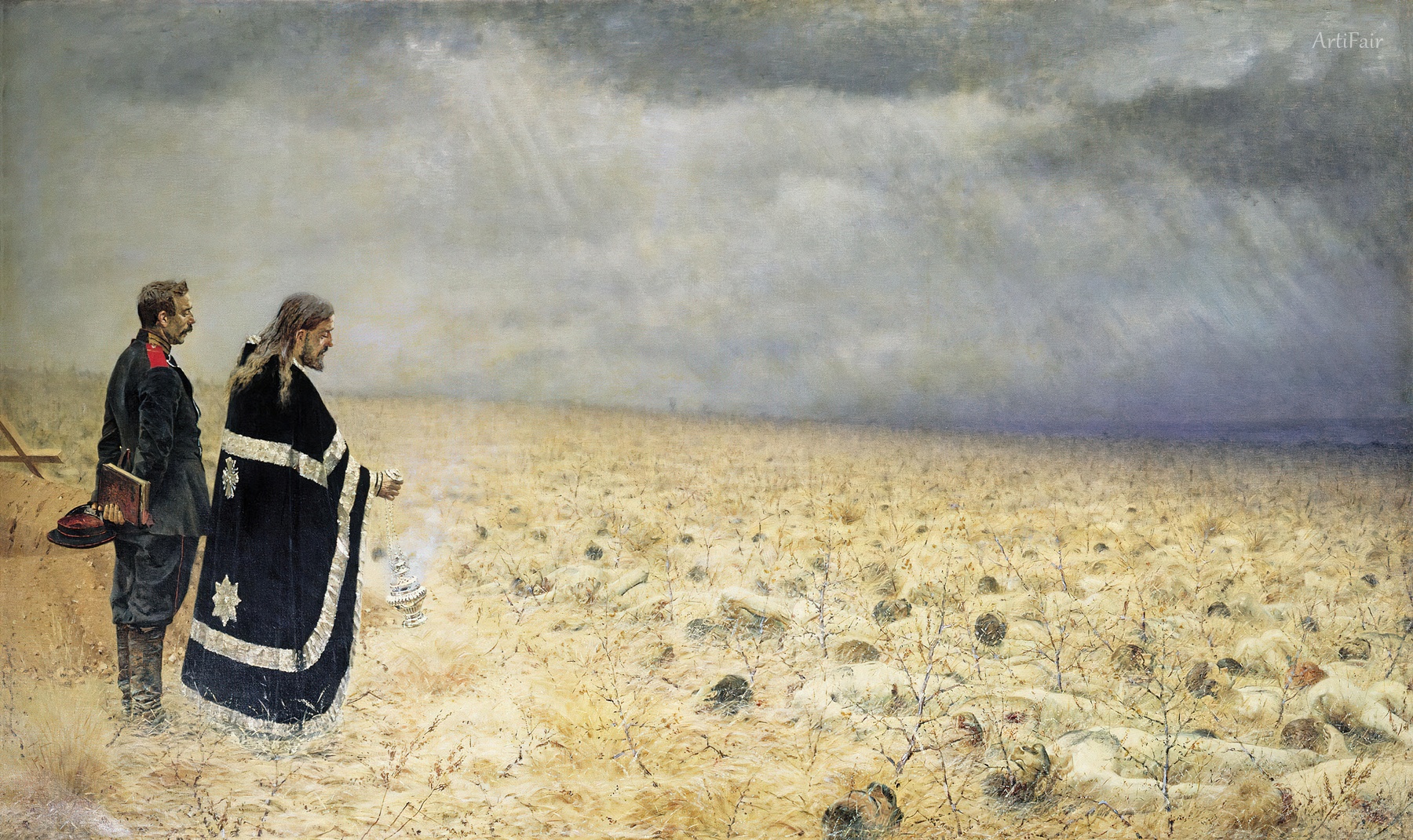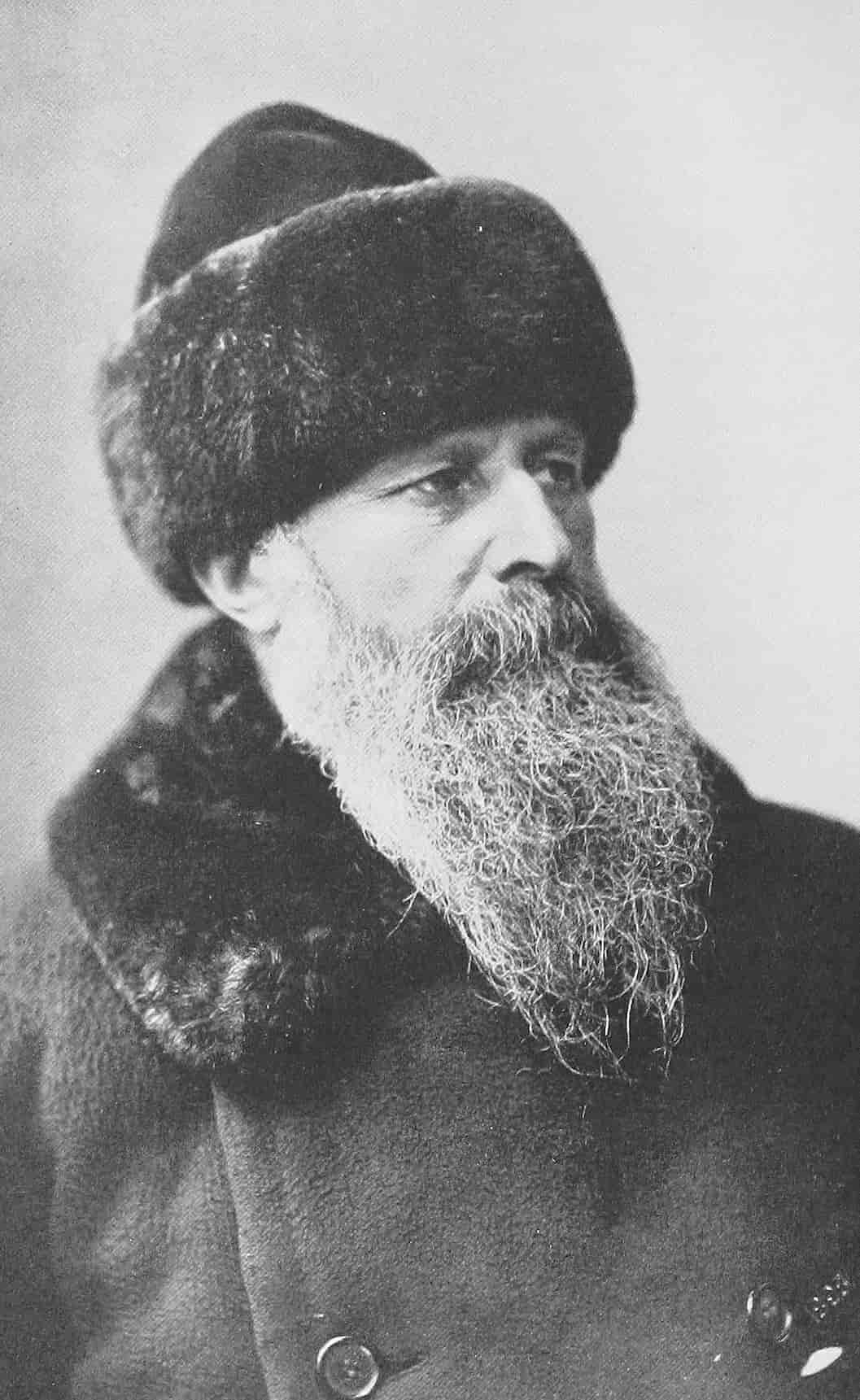

Vasily Vereshchagin
RU
137
Artworks
1842 - 1904
Lifespan
Artist Biography
Vasily Vasilyevich Vereshchagin (1842–1904) was a groundbreaking Russian artist, soldier, and traveler, renowned for his unflinching realism and profound critique of warfare. Forsaking traditional glorification, Vereshchagin dedicated his life to depicting the brutal, unvarnished truth of conflict, earning a nomination for the first Nobel Peace Prize in 1901 for his efforts. His works, both celebrated and censored, fundamentally changed the genre of battle painting, merging it with a powerful humanitarian and pacifist message.
Born into a noble landowning family in Cherepovets, Russia, Vereshchagin was destined for a military career. He attended the Alexander Cadet Corps and graduated first in his class from the Naval Cadet Corps in St. Petersburg. However, his passion for art proved stronger than his military obligations. He promptly resigned his commission to enroll in the Imperial Academy of Arts. Disenchanted with the rigid academic system, he later studied in Paris under the famed Orientalist Jean-Léon Gérôme, but soon broke from his master's romanticized methods. Vereshchagin sought authenticity, an ideal shared by the contemporary Russian realist movement, the Peredvizhniki (The Wanderers), who deeply influenced his commitment to portraying genuine, native themes.
Vereshchagin's art became inextricably linked with his experiences as a soldier and traveler. In 1867, he joined General Kaufman's military expedition to Turkestan (Central Asia). This was no detached observation; he actively participated in combat, most notably during the siege of Samarkand, where his heroism earned him the Cross of St. George, Russia's highest military decoration. These firsthand encounters with the horrors of war solidified his artistic mission: to paint war “as it really is.” The resulting “Turkestan Series” was a revelation, a collection of ethnographic studies and battle scenes that shocked audiences with their graphic detail and humanism, a stark contrast to the heroic canvases of the time.
His most iconic work, “The Apotheosis of War” (1871), depicts a pyramid of skulls set against a desolate landscape, dedicated “to all conquerors, past, present and to come.” This painting became a universal anti-war symbol. His series on the Russo-Turkish War (1877–78), where he was seriously wounded, and the Napoleonic invasion of 1812, further cemented his reputation. His raw portrayals were so potent that military authorities across Europe, including in Russia and Germany, forbade soldiers from viewing his exhibitions, fearing the works would demoralize them. Vereshchagin famously responded by offering free admission to soldiers.
An indefatigable traveler, Vereshchagin also ventured to the Himalayas, British India, Syria, and Palestine, producing a vast body of Orientalist work. Unlike his European counterparts, he avoided romantic fantasy, instead documenting the daily lives, cultures, and architectural wonders with meticulous, critical realism. His “Palestine Series” sparked controversy for its historical, non-idealized depiction of Jesus and other biblical figures, leading to clerical condemnation. In his later years, he worked on a grand series about Napoleon's disastrous 1812 campaign in Russia, a collection the Tsarist government, long critical of his work, finally purchased in 1902.
Vereshchagin's adventurous life came to a tragic end in 1904 during the Russo-Japanese War. He was aboard the flagship *Petropavlovsk* when it struck a mine and sank, killing him and Admiral Stepan Makarov. Eyewitnesses reported that Vereshchagin spent his final moments sketching the chaos, a testament to his lifelong dedication to bearing witness. He remains one of history's most important war artists, a man who wielded his brush not to celebrate power, but to expose the profound human cost of conflict.